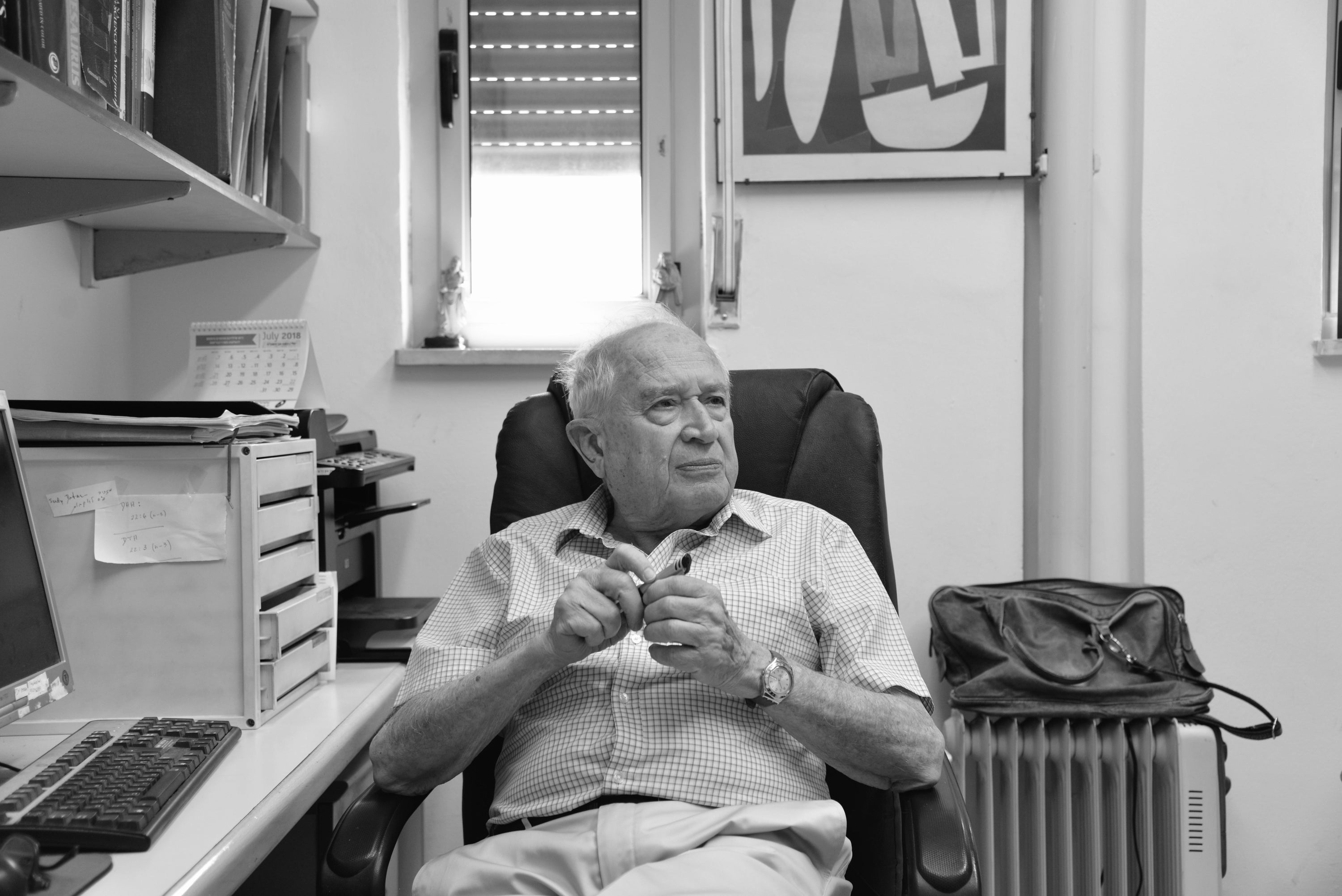In 2018, we had the privilege of interviewing the late Dr. Raphael Mechoulam, an award-winning Israeli organic chemist who dedicated over 50 years of his life to cannabis research.
Dr. Mechoulam is best known for discovering the Endocannabinoid System and first isolating the two primary compounds, CBD and THC in the early 1960s. He was a professor of Medicinal Chemistry at the Hebrew University of Jerusalem in Israel and published over 350 scientific articles, primarily focused on the chemistry and pharmacology of cannabinoids. His work earned him the title “The Godfather of Cannabis” and has left an indelible mark on the field of cannabis science.
Sadly, Dr. Mechoulam passed away in 2023 at the age of 92, but his contributions continue to shape our understanding of cannabis and its potential therapeutic applications. The text below is our conversation.
Q&A with Dr. Mechoulam

What inspired your early work in cannabis over 50 years ago?
"I am a natural product chemist, and I’m interested in the chemistry of natural products. Cannabis is a natural product, and I was surprised to see that while morphine had been isolated from opium a hundred years previously, the chemistry of cannabis was not well known. Very distinguished chemists had been looking at cannabis in the 1930’s but the active compounds had never been isolated in pure form, and therefore the full structure was not known, and it was not available for research. It looked like a promising field to go into."
What was the first thing you discovered about the cannabis plant?
"We first looked at cannabidiol, known as CBD. Cannabidiol is a compound that does not cause the “high” but is a major constituent of the plant. In the 1930’s it had been isolated by Roger Adams in the U.S. and Lord Alex Todd in the UK, but its structure was not well known, so we started there. We reisolated cannabidiol from Lebanese hashish that was supplied to us by the police. Using modern methods, we elucidated its structure, and we did the same with THC in its pure form. Since then, it has been known to be available for research."
In your own words, how do you describe the Entourage Effect?
"We saw quite early in the game that while cannabinoids have activity, the activity is frequently modified by additional compounds that may not have any activity at that time. So we found a few cases like that, and we called it a French name, the “Entourage Effect.” People use the term “Entourage Effect” to describe the fact that the effect of one cannabinoid differs from the effect of the whole plant. But unfortunately, very little work has been done on the actual mechanism of the Entourage Effect, so there is still a lot about it that we don’t yet understand. "
What is the Endocannabinoid System?
"The Endocannabinoid System is a major system in our body. As a matter of fact, a researcher published in the National Institute of Health stated that this system is involved in almost all pathological conditions, which is a very strong statement."
In your opinion, what is the difference between medical and recreational cannabis?
"There is a major difference between cannabis and medical cannabis. Medical cannabis should be used according to medical rules. We don’t have enough clinical data, so at the moment, medical cannabis is used on the basis of individual reports mostly. I assume that within a few years, we should have enough modern clinical data so that cannabis can be used according to medical rules.
Recreational cannabis is a social issue. If a state or a country wants free recreational cannabis, then they have to vote for it, and if there is a majority, then it will be approved. It doesn’t have anything to do with the medical side. It doesn’t make any sense to say that recreational cannabis should be legal because it helps children with epilepsy. These are two completely different things. Recreational cannabis is a social issue. And as the population of most countries has decided, most things are open for recreational use, like tobacco and alcohol. All of these things are known to affect our body, and they are approved because the population thinks that they should be approved. The same is true for recreational cannabis. I’m not involved at all with recreational cannabis. I’m involved in the scientific medical side of cannabis, and it is much more than just the plant material. "
What’s the biggest risk to the future of cannabinoid products?
"At the moment, I’m not happy that quite a lot of the products that are being sold are not well formulated, and we don’t know the amount of material that is present in them. Like with any other medication, when you take that drug, you should know exactly what you’re taking. With cannabis, unfortunately, not all producers do that. One can obtain material, and it doesn’t always say what the levels are of the constituents."
What is holding us back from fully understanding the medicinal potential of the plant?
"We do not have enough clinical trials. Personal anecdotes are fine, but it’s just the first step. There are a lot of autoimmune diseases, like Type 1 Diabetes, where cannabis has shown to be effective, and yet, there are no clinical trials. There are individual reports going back fifty years showing that high doses of certain strains of cannabis seem to be helping with cancer. But individual reports are not worth much nowadays, we need the clinical trials. We don’t have a single clinical trial in cancer, which is beyond me. I mean, it’s not a minor disease that only twenty-five people experience; there are millions of people with cancer. There are many types of cancers, and it seems as though cannabis is helpful, but we have no good clinical data. It’s outrageous."
What are your thoughts on Endocannabinoid Deficiencies?
"We have quite a lot of diseases that are due to too much or too little of something in the body. It seems that several diseases may be due to a lack of endocannabinoids, which is called an “Endocannabinoid Deficiency.” One should know the desired level of cannabinoid receptors, Anandamide, and 2-AG, in the body, and when needed, one can compensate with cannabinoids found in the plant. We should know what our body needs. Migraines, for example, may be due to a lack of endocannabinoids in the body. This hasn’t fully been proven yet, so maybe this is true. It’s difficult to do work on migraines with mice. I have not been able to convince a mouse to tell me whether it has a migraine or not! Very strange."
What aspect of your work are you most proud of?
"The most important aspect of my work is probably the discovery of Anandamide, a compound we named after Ananda, meaning “bliss” in Sanskrit. Anandamide is an endogenous compound that is involved in a large number of biological reactions. I believe that it will affect and explain many of the things that are happening in our bodies."
If you had unlimited time and resources for research, what would you do?
"I would probably do what I’m doing today."
Final Thoughts

Dr. Mechoulam's groundbreaking research has paved the way for a new era of cannabis-based medicine. His discoveries have inspired countless scientists and clinicians to explore the therapeutic potential of this once-stigmatized plant, opening doors to innovative treatments and therapies that may improve the lives of millions.
The scientific community, medical practitioners, and patients alike owe a debt of gratitude to Dr. Mechoulam for his invaluable contributions. His work will undoubtedly continue to shape the landscape of modern medicine, and his legacy will live on through the countless lives that will be positively impacted by his discoveries.





